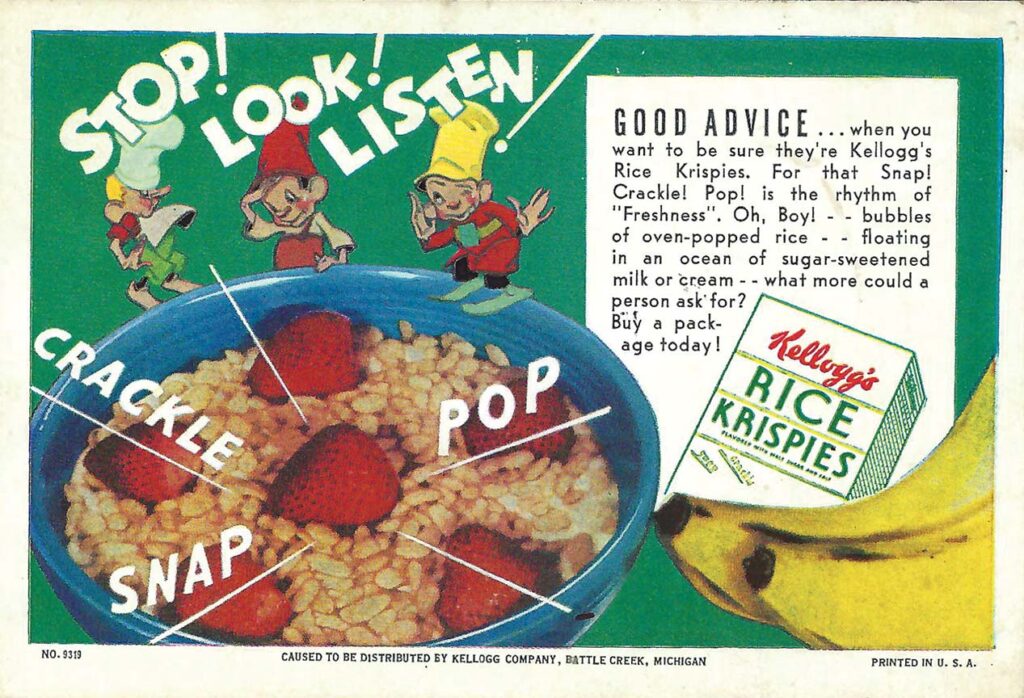
By Michael Bushnell
This week we feature two postcard-like, ink blotter cards marketed by the Kellogg’s Cereal Company of Battle Creek, Michigan. The cards were released sometime in the early 1940’s and feature Snap, Crackle and Pop, the three elf-like, animated cartoon mascots of the cereal.
The Snap, Crackle, Pop tag line made its debut in 1933 with the character Snap, appearing in his familiar baker’s hat, later that year. Illustrator Vernon Grant created the trio and approached Kellogg’s ad agency about using his art to market the cereal. Officials with N.W. Ayer Agency immediately approved the idea, sending Grant on a promotional tour to promote the new mascots and Rice Krispies cereal.
Grant stayed on with the agency until 1941, creating the art for a variety of Snap, Crackle and Pop toys available by sending Rice Krispies box tops to Kellogg’s. Also available were stuffy dolls, stickers, song booklets and nursery rhyme story booklets, all created by Grant. So began the tradition of cereal box giveaways and promotional merchandise.

In the 1950s, Snap, Crackle and Pop were joined by a fourth character named Pow, short for “power.” Appearing in only two TV commercials however, Pow—unlike Snap, Crackle, and Pop—didn’t represent one of the sounds coming from the cereal: his purpose was to promote the nutritional value of the whole grain rice. Also unlike the three brothers, he wore a spacesuit and flew a spaceship-like aircraft. According to the ad: “Pow doesn’t say much, he just does things.” His brawny form (he is taller than the other three) lends credence to this claim.
The astronaut-elf appeared at the start of the space craze, during an increasing preoccupation with space exploration and technology. Though the world’s fascination with space and technology didn’t end, Pow’s time with Snap, Crackle, and Pop did.
An updated version of Snap, Crackle and Pop appeared for the first time on television in 1960; before that it was advertised by Woody Woodpecker. They are the first and longest-running cartoon characters to represent a Kellogg’s product.
The two ink blotters have never been used. Similar blotter cards can be found on various sale sites for between $20 and $40 each.
















